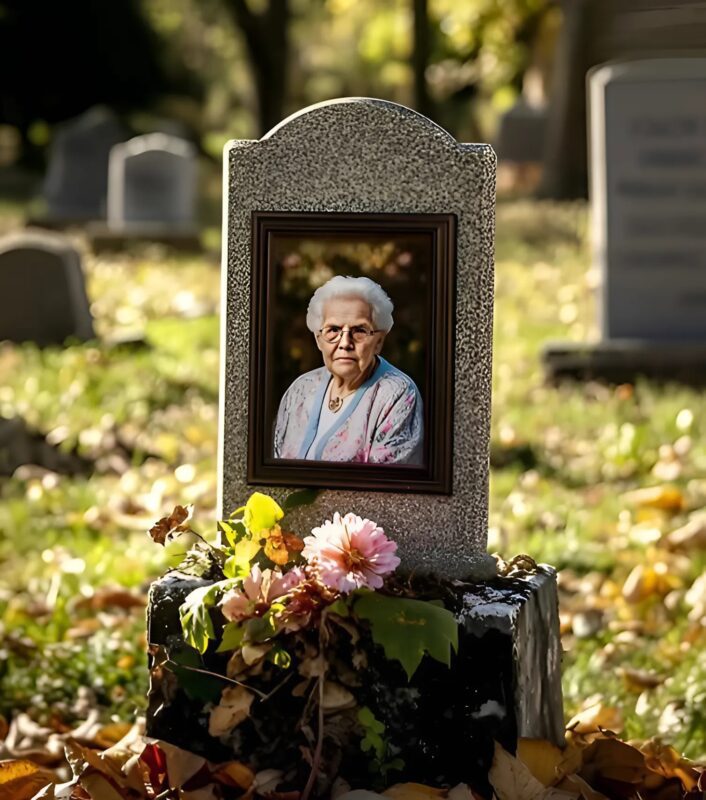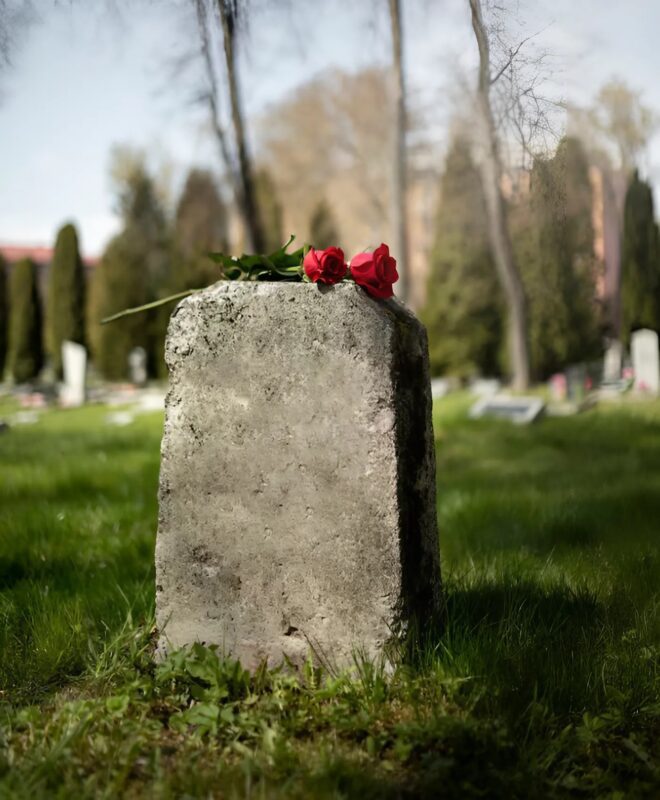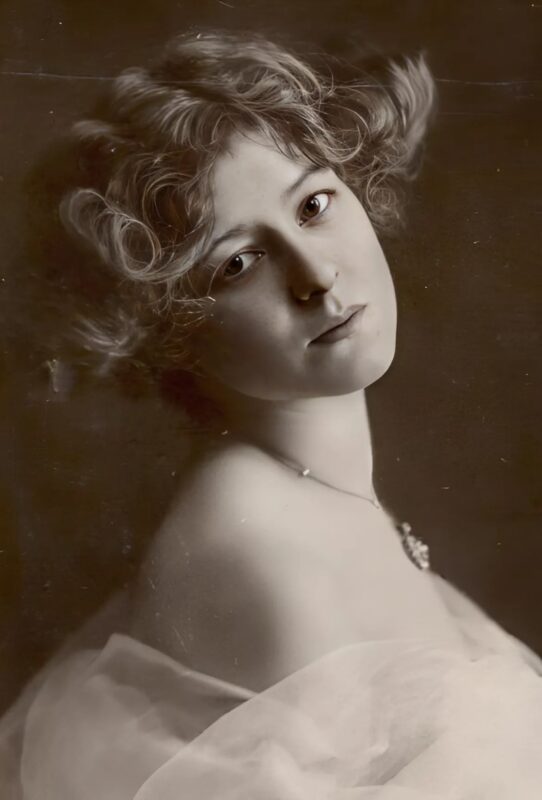My grandmother had asked me to remove her photo from the grave exactly one year after her passing. When I took it off, I let out a cry of terror. A few days before she died, she had called me to her side when we were alone. Her voice was weak, almost a whisper:
— “Remove my photo from the tombstone in a year, not before. Do you promise me?”
I tried to dissuade her from such morbid thoughts:

— “Grandmother, don’t talk like that, you’ll still be with us for a long time…”
She gave me a faint smile, closed her eyes, and repeated:
— “Promise me…”
I promised. That same night, she left us forever.
A year later, I had almost forgotten this strange request. But a promise is a promise. At her grave, I lifted the frame, and as soon as I removed her photo, I murmured:
— “This can’t be…”

Behind her portrait was an old faded photograph of a young woman: a radiant smile, a fitted dress, standing in front of an old house. She looked so much like me, except her clothes were from another time. I took a picture of the grave and went to see my grandfather for answers. He seemed to have been expecting my questions. When I showed him the image, he smiled with gentle melancholy:
— “That’s your grandmother. That’s what she looked like at the very beginning of our story. A real movie star beauty.”
— “But why did she hide this photo under the one we all know?”

My grandfather sighed, then after a moment of silence, said:
— “She cared a lot about her appearance, especially as she grew older. She often wondered why we only put pictures of elderly people on gravestones. ‘Why must we always be remembered as old?’ she would say. And at the same time, she feared people would think she was vain if she showed her youthful portrait.”
I smiled through my tears. Everything finally made sense.
She simply wanted that, even a year later, after the pain had softened, I could see the woman she truly was: beautiful, full of life, and happy.

